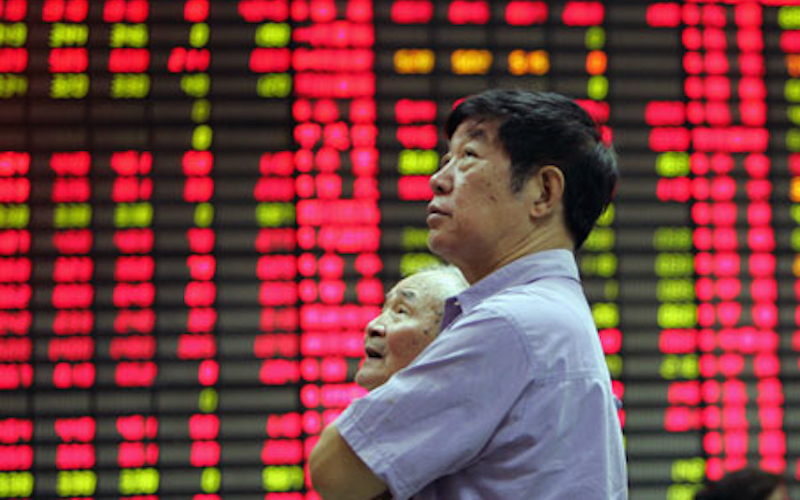
The Politics of the Chinese Economy
The Shanghai Composite Index plummeted a massive 8.4% on July 27th, signifying its steepest one-day fall in close to eight years. This latest fall in the Chinese stock market is representative of another boom and bust cycle, as the second-largest economy in the world seemingly mimics the ups and downs of a rollercoaster. The Chinese stock market plunged approximately 30% in the three weeks since mid-June, while climbing more than 150% in the previous twelve months. The economic crisis in China presents a dilemma not only to a myriad of its financial institutions, but also significantly to the investing public and the Chinese government.
Within the Chinese economy, the stock market plays a rather minuscule role due to its characterization as an emerging market. The status of this developing equities market explains why high volatility and irregularities are common. From the global perspective, the current stock market crash has not generated massive alarm due to the fact that China’s market only possesses a small share of the international stock holdings.
According to recent figures from the World Bank, the value of publicly owned shares traded within China only constitute 7% of global shares. However, domestic tensions within China are at their peak with the possibility of a looming “hard landing,” signaling a rapid and painful decline of the market along with in the bigger picture, a slowing economy. If the market continues to dwindle, the consequences may become evident in both the property and automobile industries of China.
The Chinese stock market crash is the quintessential example of a bubble burst. Investment in the Chinese stock market was occurring at unsustainable rates, with the economy unable to account for the extremely rapid investment. Margin lending can be attributed to the witnessed slump in the stock market. With the number of investors exponentially growing and the investments occurring on borrowed money, margin lending rates began to compose a vast percentage of China’s GDP. As shares began to plunge, investors decided to sell their stocks due to margin calls. This combination of margin lending and the extent of leverage have resulted in the current disorder of the market. As is the case with all bubbles, a thriving amount of investment coupled with notable returns led to numerous investors being deceived into thinking that the Chinese stock market would continue to rise at unparalleled rates. Interestingly enough, the Chinese government has a salient role in revitalizing the economy.
Instead of letting the stock market carry through with its normal rotation, the Chinese government has been intervening heavily in the crisis. Beyond the financial aspects of the stock market crash, the government is struggling to maintain its credibility and legitimacy among investors. If economic conditions fail to improve, confidence in China’s communist party reputation regarding economic capability and expertise could be lost. In order to manage the stock market collapse, the government has extended itself into the China Securities/Regulatory Commission (CSRC) and a number of brokerage firms.
The CSRC serves as the primary market regulator for the Chinese stock market, and after the recent deterioration of the market, the state-backed commission has pledged to aid in the stabilization of the market with an increase of share holdings. Large brokerage firms and the China Securities Finance (CSF) have been endowed with billions of dollars to purchase stocks in order to boost both the market and the confidence of investors.
The People’s Bank of China has slashed interest rates to a record low, and big shareholders have been prohibited from curtailing their share holdings. The government has stopped IPOs, and officials have been strictly monitoring illegal short selling. The stock market incident has also prompted the Chinese government into bolstering the overall conditions of the nation. A new stimulus was announced in order to foster growth in struggling areas of the economy, in addition to increasing spending on infrastructure and utilities.
Despite the efforts of the Chinese government to handle the stock market dilemma, the various mechanisms implemented have been proven to be rather ineffective. While keeping investor confidence is crucial, the inability of the government to let its stocks decline according to the patterns of the market is alarming. Consistent government intervention within the stock market is unsustainable, with these actions only leading to the use of massive financial resources and the delaying of an impending crisis. The investing public is also experiencing a change in attitude towards the stock market and its functions. With the Chinese government attempting to correct the market during times of financial hardship, investors may begin to invest in precarious ways under the assumption that the government will alleviate any experienced losses. UBS Chief Economist, George Magnus, stated in the Financial Times, that China’s ability to prosper and remain productive would continue to be hindered as the government meddled in economic affairs relating to resource allocation.
The ongoing Chinese market plight resembles previous financial crises in other nations, specifically those of the United States in the 1920s and Japan in the 1980s. As the stock market bubble bursts, following in the path of the property bubble, the government of China faces the arduous task of figuring out how to achieve an equilibrium capable of balancing both political and economic desires.

